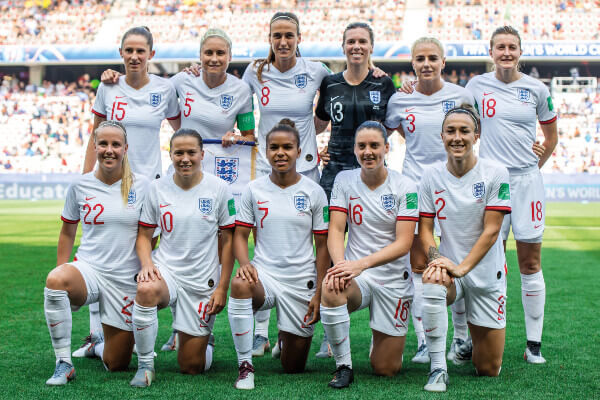The History of the Women’s World Cup

As we approach the ninth edition of the official Women’s World Cup, we chart the rapid evolution of one of football’s most loved competitions.
Although the first official Women’s World Cup was held in 1991, it’s appropriate to trace back a further two decades to find the Calcio Femminile Coppa Del Mondo. The tournament, a first attempt to bring together representative female footballers from around the world, was staged in Italy in 1970. It drew significant crowds, perhaps encouraged by title sponsors Martini and Rossi!
Denmark beat the hosts 2-0 in the final, defending their win the following year in front of audiences approaching six figures at Mexico’s six-team tournament, where a ‘British Independent Ladies’ team – including a 13-year-old winger, Leah Caleb – also competed.
After further iterations in the 1980s, FIFA saw the obvious promise of the event, but it wasn’t until that inaugural official Women’s World Cup took place in China, in 1991 – with the United States beating Norway 2-1 in the Guangzhou final – did the tournament truly ascend its status.
It’s apt that the Americans won the first competition, as they have dominated the women’s game since. However, the Norwegian side would take the plaudits in Sweden in the second edition. Their hugely talented squad of players beat Germany 2-0 at the Råsunda Stadium in Stockholm, with goals from Hege Riise and Marianne Pettersen, as the Lionesses debut ended at the quarter-final stage.
The ‘Stars and Stripes’ would regain the title on home soil in 1999 against China, as Brandi Chastain netted the winning penalty in the 5-4 shootout victory for the United States.
That World Cup was built on the success of the first Olympic women’s football tournament held during the 1996 Atlanta Games, with the 1999 World Cup played in front of an average of 37,000 spectators per match.
The event in 2003 was also held in the US, who stepped in after planned hosts China had to relinquish duties after an outbreak of SARS. Yet there was to be no back-to-back success for the Americans, as they crashed out in the semi-final to a Germany side who went on to defeat Sweden for their first title.
 China belatedly hosted the tournament four years later, and Germany were able to defend their 2003 title with a 2-0 victory over Brazil in the Hongkou Stadium. England were knocked out by the USA in the quarterfinals, a stage they just couldn’t get past… yet.
China belatedly hosted the tournament four years later, and Germany were able to defend their 2003 title with a 2-0 victory over Brazil in the Hongkou Stadium. England were knocked out by the USA in the quarterfinals, a stage they just couldn’t get past… yet.
A new name would be on the trophy in 2011 as Japan took this instalment by storm, beating the hosts and hat-trick-seeking Germans in the quarters, the Swedes in the last four, before coming from behind to see off the mighty Americans on penalties in the final.
Canada 2015 saw an increase to 24 teams from 16, and offered revenge for the USA as they beat Japan 5-2 in the Vancouver final. The tournament was controversial for being played on artificial turf in sweltering conditions.
France 2019 attracted a global television audience of over 1.1 billion, with the United States winning again, this time 2-0 against Sarina Wiegman’s European champions, Netherlands.
With England having trodden that same familiar path under the talented Dutch coach by securing their first international title win in the form of the 2022 Euros victory against Germany, could they add a World Cup final to their resume in Australia and New Zealand?

